With every new version of iOS, Apple has placed a strong emphasis on customer privacy on its products, including the iPhone. The Cupertino company added the ability for users to lock particular folders in the Photos app on iPhones and iPads with Face ID or Touch ID with the previous version of iOS 16, such as the Hidden folder and the Recently Deleted folder.
With iOS 17, the capability has been added to the iPhone’s Safari browser and users may now lock their Private Browsing tabs. Therefore, if you were seeking for a detailed tutorial on how to lock the private browsing window in Safari on your iPhone running iOS 17, go no further!
In this article, we covered everything there is to know about Safari’s new closed private browsing feature and how to turn it on with iOS 17 on your iPhone to keep your private browsing tabs safe from prying eyes.
What does iPhone’s Safari in iOS 17’s Locked Private Browsing mean?
With iOS 17’s new closed private browsing capability, users can now effectively lock the Private window within the mobile web browser with Face ID. This means that unless you unlock it with your Face ID, the Private tab in the Safari app on your iPhone will be locked and hidden from view.
Before, anyone who had your iPhone in an unlocked condition could simply access the Private window in the Safari app. You do, however, gain an additional degree of security from people with spying tendencies with iOS 17’s new restricted private browsing feature for Safari.
It essentially locks out the entire Private window on your iPhone’s Safari program, and Face ID is the only way to unlock it. On your iPhone running iOS 17, all of your private tabs in the Safari app will be secure and completely private.
How can I use Face ID on an iPhone running iOS 17 to lock Safari Private Browsing?
Now that you know more about the new locked private browsing feature in iOS 17’s Safari for iPhone, you may be asking how to turn it on. Do not worry; in this part, we will give you an easy-to-follow, step-by-step tutorial on how to lock the Private window in the Safari app on your iPhone.
Before we get started, it’s important to note that after updating your iPhone to iOS 17, the closed private browsing feature for Safari won’t automatically be enabled. To use it, you will need to manually enable it on your device.
Check out the instructions just below to lock your iPhone’s Safari private browsing window with Face ID in iOS 17:
- Open the iPhone’s Settings app.
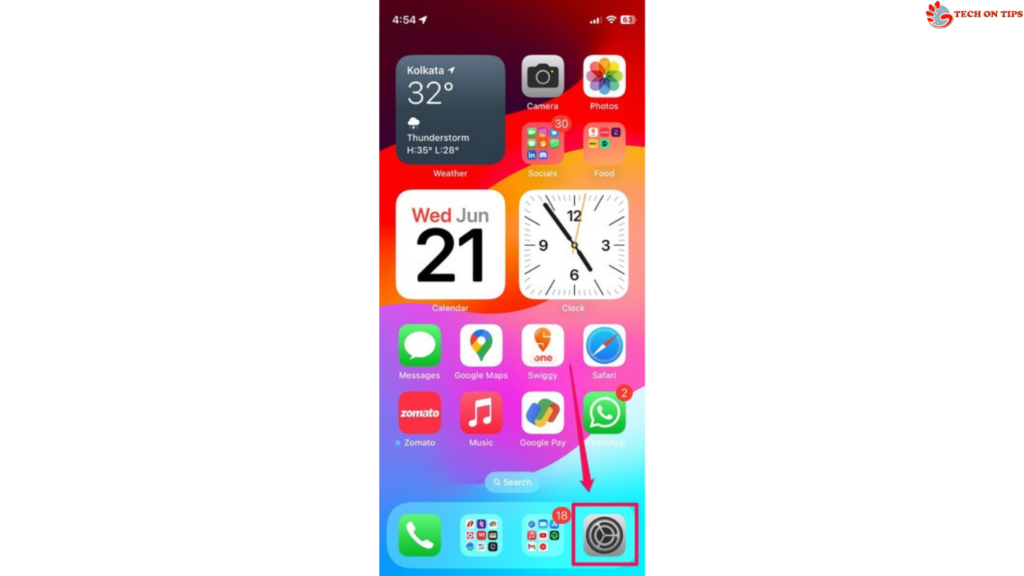
- The Safari app can be found in the Settings list; press it to launch it.
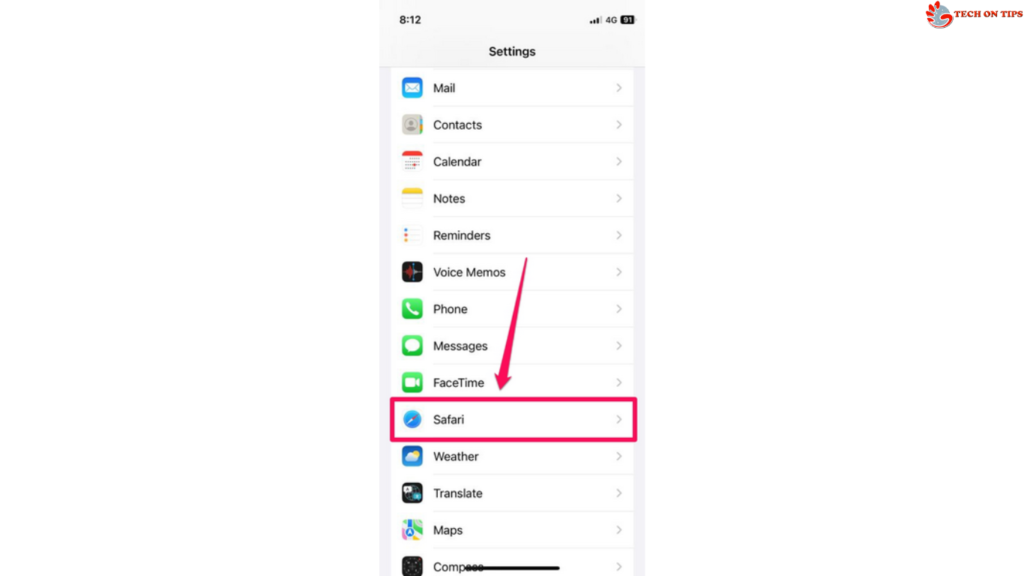
- To activate private browsing on your smartphone, scroll down to the Privacy & Security section and tap the toggle for Require Face ID to Unlock Private Browsing.
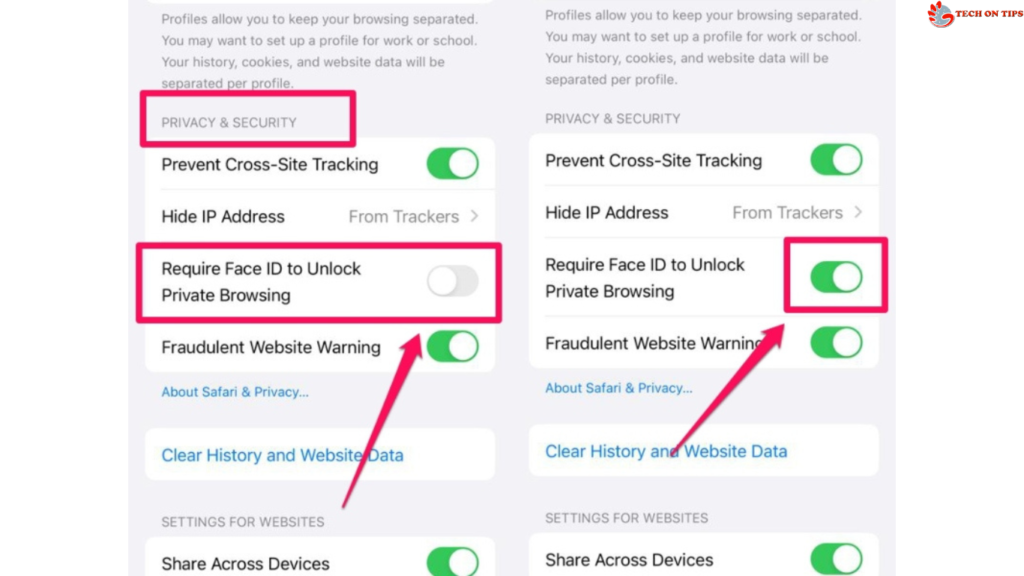
Note: In iOS 17, you will need to authenticate with Face ID in order to turn off Safari’s locked-in private browsing capability.
Congratulations! The new iOS 17 closed private browsing functionality for Safari on your iPhone is currently operational.
How Does Locked Private Browsing on an iPhone with iOS 17 Work?
The Private window in the mobile web browser will now lock as soon as you enable the Require Face ID to Unlock Private Browsing setting in the Safari settings on your iPhone running iOS 17.
Therefore, when you open the Safari app on your iPhone and go to the Private window, you will get a page that reads “Private Browsing Is Locked.”
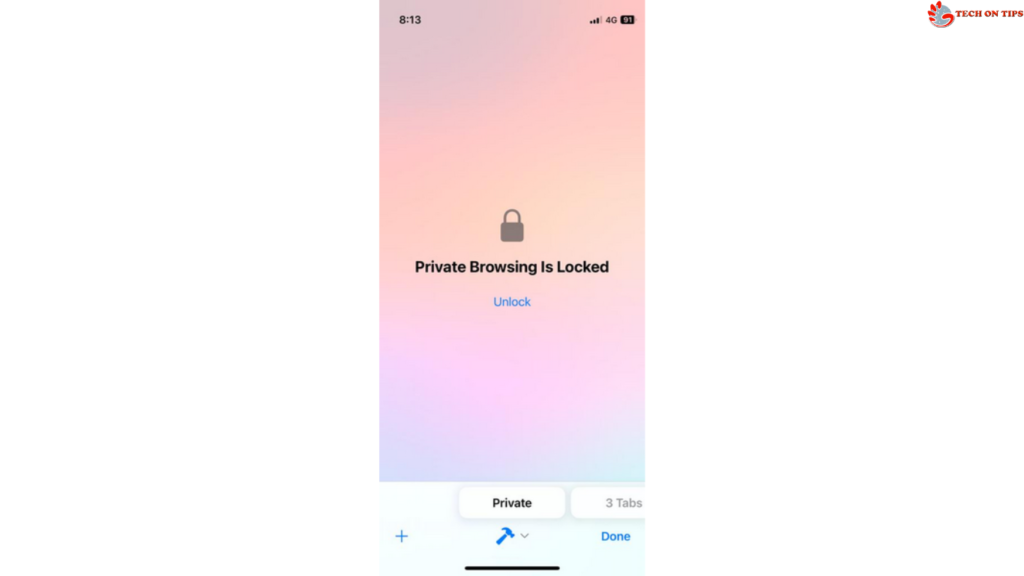
If locked private browsing is enabled and you open the Private window in the Safari app on your iPhone, it will instantly start the Face ID scan to unlock the window. If it doesn’t, you may manually start the scan by tapping the Unlock button to the right of the “Private Browsing Is Locked” statement.
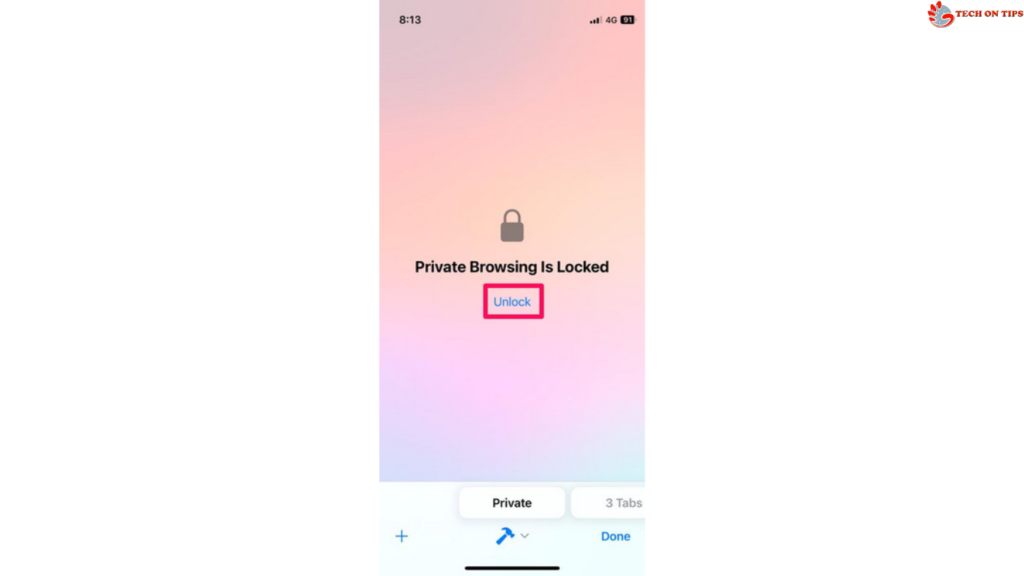
The fact that all Safari profiles on your iPhone running iOS 17 are affected by the new locked private browsing functionality in Safari is another significant point to keep in mind. With the option to Require Face ID to Unlock Private Browsing enabled on your device, all of your Safari profiles’ Private windows will be shut out.
How to Turn Off Locked Private Browsing in iOS 17 on an iPhone?
Now that iOS 17 is available, it’s simple to turn off Safari’s closed private browsing feature on your iPhone.
You can easily disable the Require Face ID to Unlock Private Browsing setting on your device and keep the Private windows for all of your Safari profiles unlocked at all times by simply following the steps below:
- Open the Settings app on your iOS device in step.

- Go to the Safari settings.

- In the Privacy & Security section, scroll down and tap the toggle next to Require Face ID to Unlock Private Browsing.

That’s all, then! This will immediately turn off iOS 17’s locked private browsing feature for Safari on your iPhone.
FAQs
On my iPhone, can I lock private tabs in Safari?
You can lock private tabs in the Safari app by turning on the Require Face ID to Unlock Private Browsing option in the Safari settings on iPhone models that support the most recent iOS 17 operating system. So long as your iPhone is compatible with iOS 17, you can lock private tabs in Safari.
How can I open private tabs on an iPhone running iOS 17?
You can use Face ID to unlock the Private window within the Safari app when you enable the locked private browsing option for Safari on your iPhone in iOS 17.
Can I use Touch ID on an iPhone to lock private tabs in Safari?
There are no Touch ID-compatible iPhone models that work with the most recent iOS 17, even if some iPad models with iPadOS 17 may be able to lock private tabs in Safari using Touch ID. Therefore, using Touch ID on your iPhone to lock private tabs in Safari is not possible.
The conclusion
So there you have it, then! This was all about Safari’s new locked private browsing functionality, which enables you to use Face ID on your iPhone to lock the Private window of the mobile web browser. This is undoubtedly a useful feature that will allow users to keep their private tabs in Safari hidden from prying partners or nosy coworkers.
Along with this, Apple also improved Safari with iOS 17 by including useful features like the ability to create and manage multiple profiles and autofill verification codes from Mail and Messages.
Please share your views and opinions in the comments area below regarding these new iPhone Safari capabilities that debuted with the most recent iOS 17. While you’re at it, please let us know whether this article was helpful in enabling the iOS 17 closed private browsing option in Safari on your iPhone.










